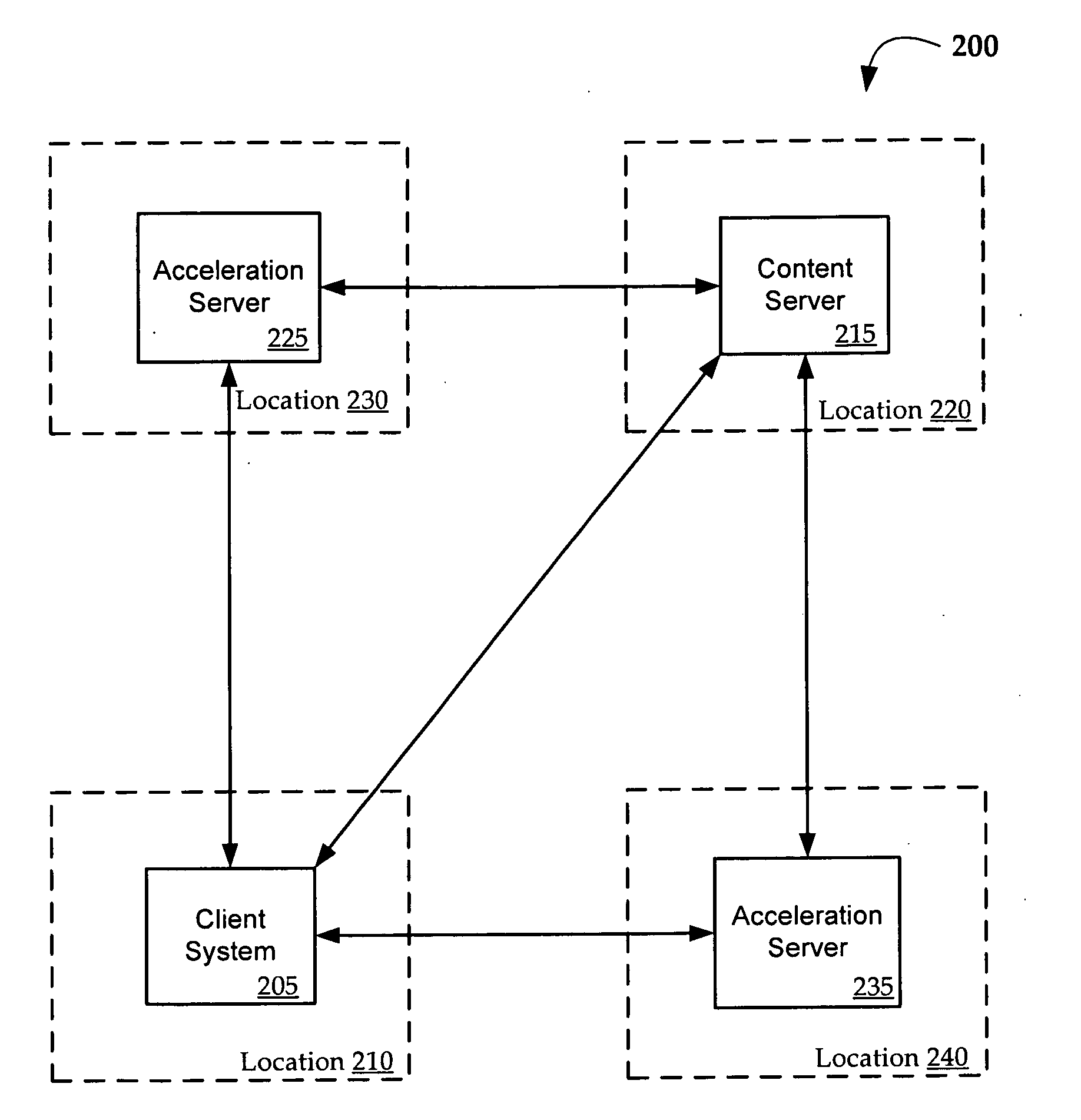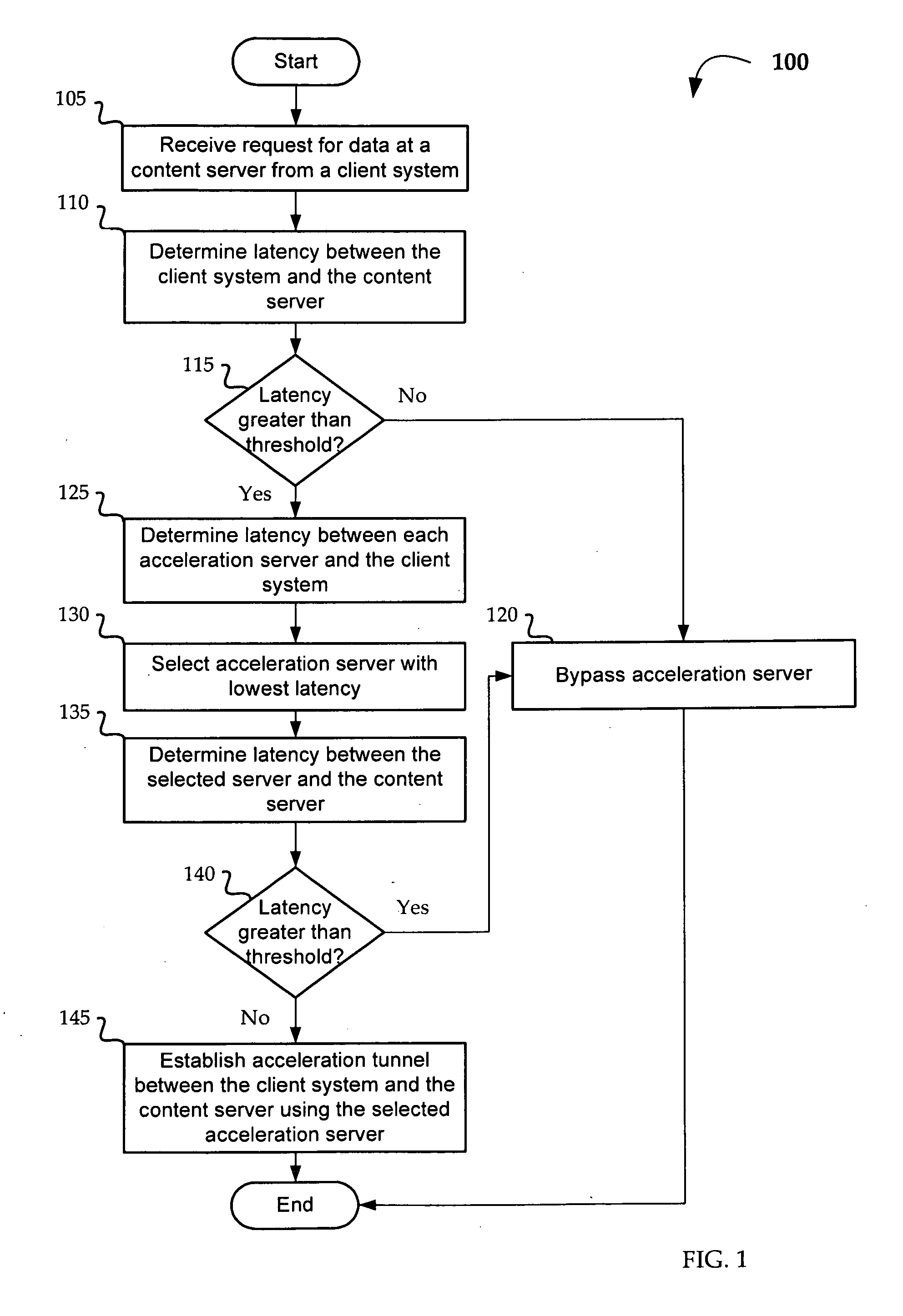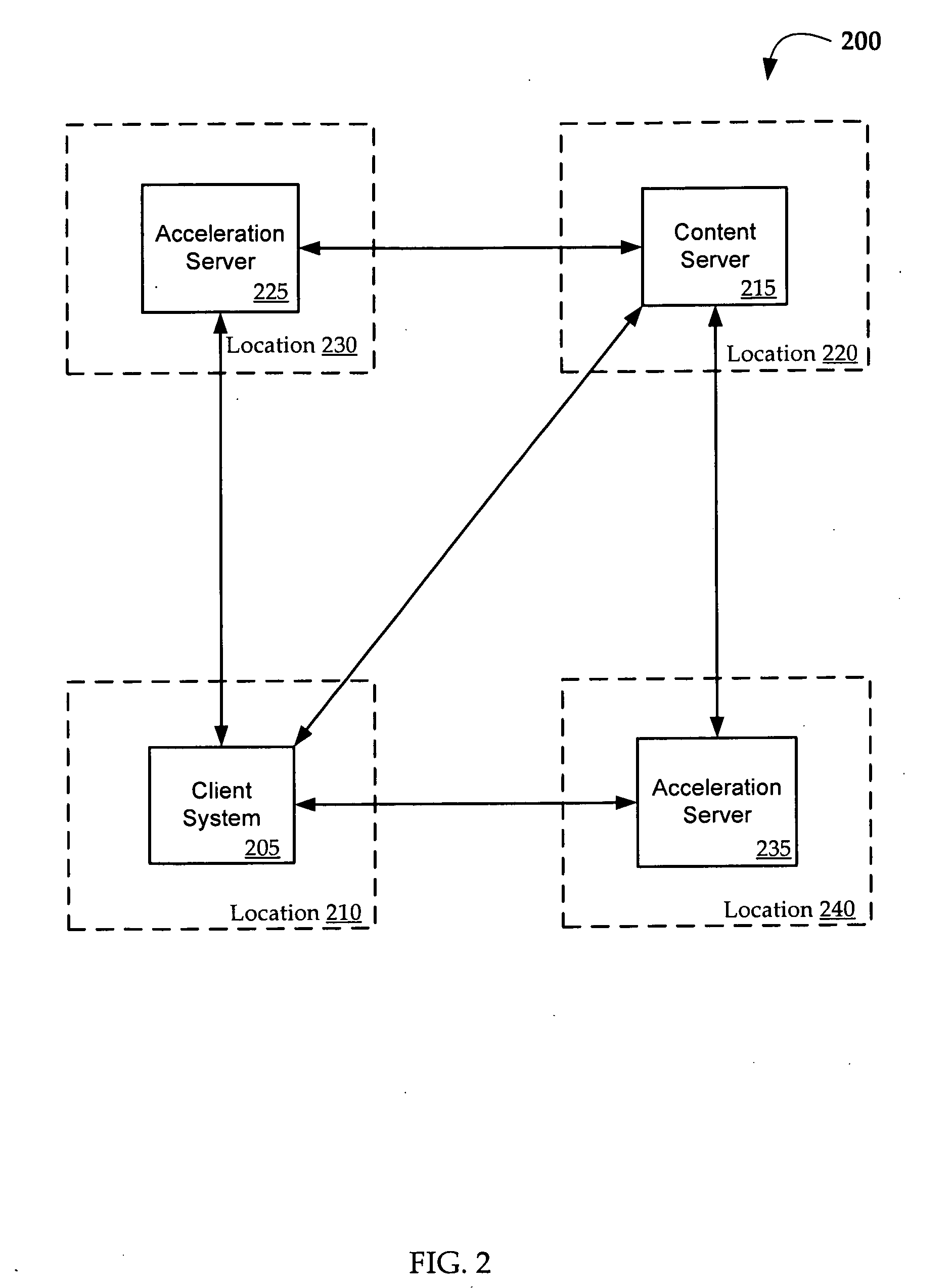Methods and Systems for the Use of Effective Latency to Make Dynamic Routing Decisions for Optimizing Network Applications
- Summary
- Abstract
- Description
- Claims
- Application Information
AI Technical Summary
Benefits of technology
Problems solved by technology
Method used
Image
Examples
Embodiment Construction
[0012]Aspects of the disclosure relate to the use of “effective latency” to make dynamic routing decisions in distributed IP network applications. Aspects of this disclosure further relate to latency-based bypass of acceleration servers in conjunction with latency-based routing. For example, a mobile client in San Francisco may be attempting to access a file on a content server in London with acceleration servers located in Berlin and Seattle. Based on latency data between the mobile device, the content server, and the acceleration servers, a decision whether to bypass the acceleration servers is made and, if it is determined not to bypass, a routing decision is made based on latency data.
[0013]In one embodiment, latency for the purposes of the present invention may be defined as “effective latency.” In other words, a routing decision may be made based on more than simply the RTT of a connection. For example, even though the RTT of the connection between a client and a server A is l...
PUM
 Login to View More
Login to View More Abstract
Description
Claims
Application Information
 Login to View More
Login to View More - Generate Ideas
- Intellectual Property
- Life Sciences
- Materials
- Tech Scout
- Unparalleled Data Quality
- Higher Quality Content
- 60% Fewer Hallucinations
Browse by: Latest US Patents, China's latest patents, Technical Efficacy Thesaurus, Application Domain, Technology Topic, Popular Technical Reports.
© 2025 PatSnap. All rights reserved.Legal|Privacy policy|Modern Slavery Act Transparency Statement|Sitemap|About US| Contact US: help@patsnap.com



